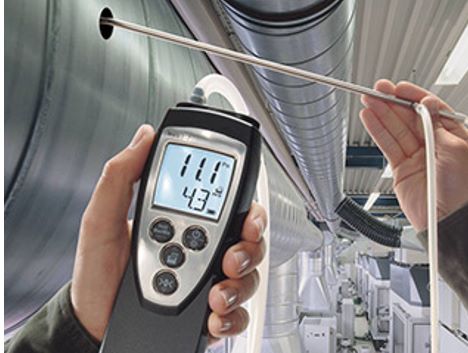
HVAC Duct Airflow Measurements and Their Importance
• Air flow measurements in ducts are crucial for proper functioning of HVAC systems.
• High air volume can increase operating costs, such as energy expenditure for fans and air conditioning costs.
• Various standards worldwide, including EN 12599, EN 16211, and ASHRAE 111, are used to determine flow velocities.
• The key parameter for evaluating the HVAC system's functional capability is the air volume flow, which is the product of flow velocity and duct area.
• The right measuring location is essential for meaningful measurements, with minimum distances from disruptions and easy accessibility.
• Air flow through a duct does not have a uniform velocity, with ideal flow profiles found in long ducts running in a straight line and without disruptions.




